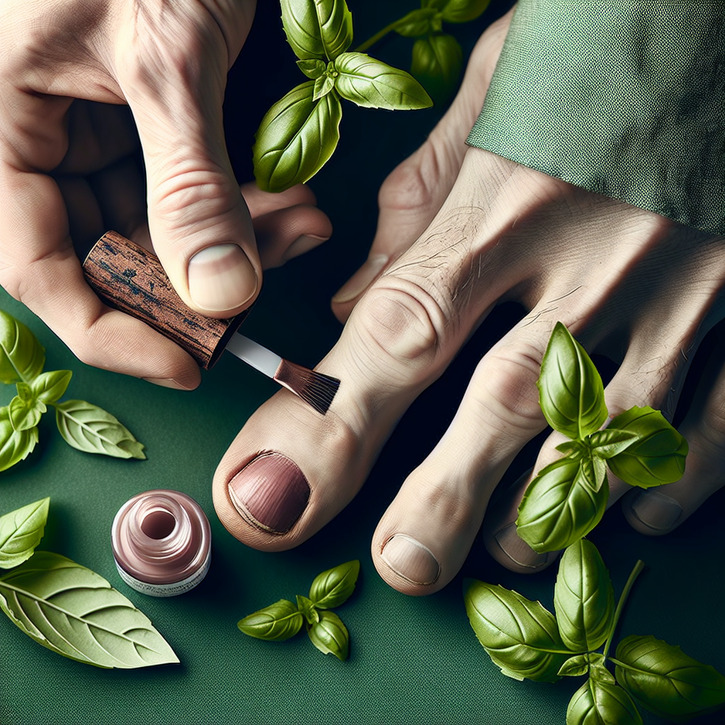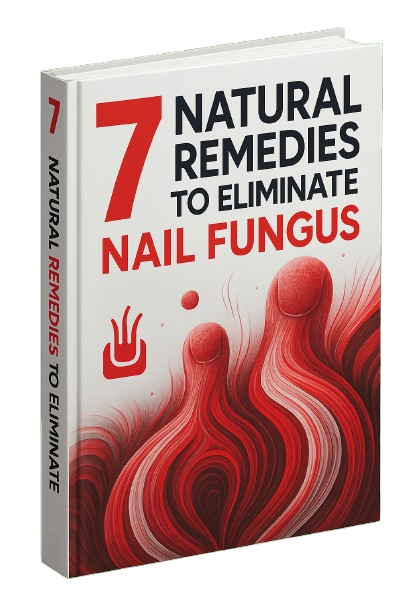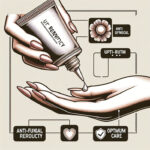Black Toenail Treatment at Home: Natural Remedies That Work

Introduction to Black Toenail Treatment
Hey there! Welcome to our friendly guide on handling a black toenail right at home. In this post, we’re diving into some natural remedies that genuinely work, giving you a straightforward explanation of the condition along with easy steps to help your nail bounce back to health. At first glance, a black toenail might seem like a tiny issue, but it can sometimes hint at trauma, infection, or another problem lurking beneath the surface. With a mix of expert tips and time-tested natural fixes, we're here to walk you through each step of managing your symptoms.
Lots of folks have dealt with black toenails at one time or another, whether it’s from a sudden sports injury or a nagging fungal infection. It’s really important to understand these changes quickly to avoid any further complications. In this article, we'll unravel what exactly a black toenail is all about, what usually causes it, and why acting fast can really turn things around. Our aim is to give you clear, trustworthy info so you can make smart choices about your health.
What Is a Black Toenail?
In simple terms, a black toenail is when your nail takes on a dark color, often because of bruising, bleeding, or a little blood pool under the nail. It’s not just a cosmetic issue—this shift in color often points to your body’s response to an injury or an infection. Sure, a sudden color change might send your heart racing, but it’s also your body’s way of signaling for a closer look. Knowing what a black toenail actually entails is the first move in choosing the right remedy for you.
Generally speaking, a darkened toenail doesn’t always spell something catastrophic, but it should definitely get your attention. You might notice hues that range anywhere from dark brown to almost black, sometimes accompanied by swelling or tenderness. These signs are your body’s natural way of healing itself, and understanding them puts you in a great position to speed up recovery. Plus, when you’re aware of what’s going on, you can avoid repeating the same issues down the line.
Common Reasons for a Black Toenail
There are several triggers behind why a toenail might go black, from minor bumps to more complex infections. One of the usual culprits is trauma—imagine accidentally jamming your toe or having it squeezed in a tight space, causing bleeding right under the nail. On the flip side, fungal infections can also slowly darken your nail as they work their mischief, often leading to cracking and thickening along the way. Sometimes, underlying health issues or prolonged exposure to harsh chemicals can also lead to this discoloration. Knowing these common causes can really help you decide which home remedy to try first.
Even though a black toenail is often due to something relatively mild, it's wise to keep an eye on it. What seems like a small bump could hide a more serious issue—especially if you notice pain or swelling. By keeping these triggers in mind, from sudden impacts to chronic fungal troubles, you’ll be better positioned to approach your treatment in a targeted, effective way.
The Importance of Early Black Toenail Intervention
Getting your black toenail treated early on can seriously cut down the risk of complications and help you feel better faster. When you spot the problem early, you have a much better chance of figuring out what’s behind the discoloration—be it an injury, an infection, or something else—and addressing it effectively. Taking immediate action can stop the problem from snowballing into a more persistent issue, making the road to a healthy nail a lot smoother.
Quick action is the name of the game. If you ever notice a sudden darkening or a weird texture change in your nail, it’s a smart move to kick off your home treatment routine and keep a close eye on it. Often, a few natural remedies and minor lifestyle tweaks can stop the problem before it escalates. Throughout this guide, we’ll share various strategies for early intervention so you can confidently regain control over your nail health.
Understanding the Causes of Black Toenail
Before you jump into treating a black toenail, it's super important to get a handle on what might be causing it. When you know the root of the issue—whether it’s due to a bump or an infection—it becomes much easier to pick the remedy that fits best. Each cause of discoloration has its quirks, and by understanding these, you’ll be more equipped to avoid missteps and tailor your treatment for a quicker recovery.
Getting clued up on these underlying reasons not only helps you spot the early signs but also paves the way for the most effective home remedies. In a nutshell, knowledge truly is power. Once you figure out what set off that black toenail, you’re on your way to taking preventive measures and steering clear of repeat problems. Let’s dive a bit deeper into the most common causes behind that discoloration and see how they typically show up, so you feel ready to tackle the issue head-on.
Trauma and Injury Leading to a Black Toenail
When it comes to black toenails, trauma is often front and center. Most of the time, it’s a sudden, forceful hit—or even everyday pressure from overly snug shoes—that causes little blood vessels under the nail to burst, letting blood collect beneath the nail plate. That collection of blood is what gives the nail its dark look. Although it might seem alarming at first, these injuries are usually harmless and can clear up over time with proper care and some natural remedies.
It doesn’t take much—think of stubbing your toe during a game of pick-up basketball or even the constant pressure from running—to trigger this condition. Recognizing the source of the trauma is a big help, because it guides you in choosing the right treatment. Whether it’s an acute injury or repetitive stress over time, understanding the cause lets you introduce corrective measures and speed up the healing process.
Fungal Infections Contributing to a Black Toenail
Fungal infections are another common reason behind a black toenail. Unlike an immediate bruise from an impact, fungal trouble creeps in gradually, leading to changes in color, nail thickness, and even texture over time. When the fungus takes a bite out of your nail’s health, dark patches or a general browning can occur. Treating a fungal infection usually calls for a different approach compared to a straightforward injury, often relying on natural antifungals and good hygiene.
The fungus invades under the nail, feeding on the layers of keratin, which makes the nail brittle and discolored. Catching these symptoms early—such as flaky skin or thicker nail sections along with discoloration—can help you set up a focused treatment plan. With the right mix of natural antifungal solutions and possibly a tweak in your diet, you can fight off the infection while encouraging your nail to heal.
Recognizing Symptoms of a Black Toenail
Spotting a black toenail early on is key to effective treatment. While the primary sign is that noticeable dark spot or overall deepening of the nail, you might also feel some pain, tenderness, or even notice a bit of swelling. Occasionally, people mention a throbbing sensation or discomfort when pressure is applied. Paying close attention to these signals is super important.
Though these symptoms are often visible, don’t brush them off, especially if they stick around or seem to worsen. Along with the color changes, look out for changes in texture like thickening or brittleness, as these might mean the issue is more than skin deep. Listening to your body and catching these early hints can guide you in adopting the right treatment with natural remedies and preventative measures, ensuring your nail gets back to its best form.
Visual and Sensory Signs of a Black Toenail
A black toenail really stands out thanks to its deep, unusual hue that contrasts with the natural color of your nail. You may also spot bruises under the nail, minor cracks, or splits. Along with these visual cues, you could experience some odd sensations like mild discomfort, a bit of swelling, or heightened sensitivity at your toe’s tip. All these signs together are like little messages from your body, hinting at what’s really going on underneath the surface.
Even if the discoloration doesn’t seem to be getting worse, these visual and sensory clues suggest it's time to take a closer look. The trick is to pay attention to these signals and kick off treatment sooner rather than later. Doing so not only helps improve the appearance of your nail but also sets the stage for better overall foot health.
When Discomfort Signals a Black Toenail Problem
Sometimes, a black toenail isn’t just about looks—it can be a telltale sign of underlying discomfort that needs addressing. If you’re feeling persistent pain, a steady throbbing, or just increased sensitivity, these could be warning signs that your condition is worsening. Pain is your body’s way of flagging that something’s off. Balancing home care with professional advice when needed is key in these situations.
Often, proper home care and natural remedies can help ease the discomfort. However, if the pain sticks around or you start noticing the symptoms get more intense, it might be a good idea to reconsider your approach. Staying in tune with your body and adjusting your treatment as needed will put you on the right path to a smoother recovery and help prevent any long-term issues.
Natural Remedies for a Black Toenail at Home
When it comes to tackling a black toenail at home, there’s a treasure trove of natural remedies you can try. These home treatments work to boost healing, ease any discomfort, and bring your nail back to its natural look—all without relying on harsh chemicals or invasive procedures. Many of these solutions aim to enhance blood flow, calm inflammation, and even tackle fungal infections using herbal mixtures. Combining these elements can help you manage your black toenail in a gentle, sustainable way.
The best part? Home-based treatments are super accessible. Whether it’s soaking your feet in apple cider vinegar, using tea tree oil, or even enjoying an Epsom salt bath, these age-old remedies have been helping people for generations. They not only serve as natural antifungal agents but also promote overall nail wellness. In this section, we’ll explore some tried-and-true methods you can easily incorporate into your daily routine to manage your black toenail naturally and effectively.
Home-Based Treatments for a Black Toenail
One go-to home remedy for a black toenail is a warm, soapy foot soak with a dash of Epsom salt. This simple trick boosts blood circulation and can really help ease the discomfort tied to the condition. Another neat option is tea tree oil, a natural antifungal powerhouse—just a few drops on the affected nail after a good clean can work wonders. These easy-to-follow home remedies are generally safe, as long as you keep a steady routine that nudges your nail back toward health.
Alongside these treatments, it’s wise to stick to a strict foot hygiene routine. Ditch old nail polish and steer clear of tight footwear to minimize further damage. Little changes like these can make a huge difference, helping your nail recover while cutting down on the risk of infection. With a consistent routine and the right mix of natural care, you’ll start noticing improvements over time—a great strategy for anyone looking to treat a black toenail naturally.
Herbal and Natural Mixtures Targeting Black Toenail Issues
For ages, herbs and natural blends have proved to be effective in dealing with nail dilemmas like black toenails. For example, mixing garlic with olive oil can be a potent remedy thanks to garlic’s natural antifungal properties, while olive oil keeps things moisturized and calm. Another favorite is a paste made from turmeric and coconut oil—turmeric fights inflammation and coconut oil helps smooth things out, making this combo a neat, easy-to-apply remedy for your toenail.
These natural mixtures are a hit because they tackle issues on multiple fronts: fighting infection, reducing inflammation, and boosting tissue repair. Many users notice a real difference over time in both the look and the health of their nails when they stick with these remedies. Adding these herbal blends to your daily care routine is a smart way to bolster your natural remedy toolkit.
Dietary Adjustments to Support Black Toenail Recovery
It might surprise you, but what you eat plays a huge role in how healthy your nails are! A balanced diet rich in vitamins, minerals, and antioxidants can truly support tissue repair and strengthen your nails. Foods loaded with vitamin C, vitamin E, and biotin are especially beneficial, as they help regenerate a healthy nail bed and ease inflammation. Including plenty of leafy greens, berries, and nuts in your meals can give your immune system a boost and improve overall nail quality.
It’s a good idea to cut back on processed and high-sugar foods, which can sometimes worsen the situation. A nutrient-rich diet works hand in hand with your home remedies, creating a holistic approach to treating a black toenail. Focusing on what you eat lays down the foundation for stronger nails and speeds up the healing process naturally—a perfect complement to the topical and herbal treatments we’ve mentioned earlier.
Step-by-Step Black Toenail Treatment Guide
Now that you’re up to speed on what causes a black toenail and what natural remedies can help, let’s take a walk through a step-by-step guide for treating your condition at home. Think of your journey as built on three key stages: initial care, consistent treatment, and regular maintenance. Start off with gentle cleaning to remove any dirt or bacteria, then dive into applying your favorite herbal remedies. As you move along, combining these treatments with dietary tweaks and good hydration will really give your recovery a boost.
This thorough guide is designed to slot right into your daily routine. Whether you’re dealing with sudden pain or a gradually worsening problem, these steps are laid out to be effective without being complicated. They’re here to help restore your nail’s strength and keep future issues at bay.
Initial Care Techniques for a Black Toenail
The moment you spot a black toenail, proper initial care is key. Start by gently cleaning your affected toe with lukewarm water and a mild antiseptic soap to wash away any irritants. Once it’s nicely dried, spread a thin layer of tea tree oil mixed with a carrier oil like coconut oil over the area. This combo helps fend off any fungal invaders and calms inflammation. This first step is all about soothing your toe and setting a solid foundation for the healing process.
Even if the discoloration seems minor, don’t skip this critical cleansing step. Keeping the area clean can make a world of difference as your nail begins its recovery journey, ensuring that every subsequent remedy works its magic more effectively.
Routine and Maintenance in Black Toenail Treatment
After you’ve set up your initial care routine, consistency is what really seals the deal. Regularly soaking your foot in warm water with Epsom salt, followed by your chosen natural remedies, will steadily pave the way for long-term recovery. Keeping up with proper hygiene and routine inspections of your nail is essential to fend off re-infections and help your nail regain its health over time.
Small, everyday choices—like wearing breathable shoes, opting for moisture-wicking socks, and giving your feet some downtime—can really add up. These little habits boost your treatment plan’s success, ensuring your black toenail gradually improves and complications become a thing of the past.
Preventive Strategies for Black Toenail Issues
Preventing a black toenail from coming back is just as important as treating it in the first place. A few smart strategies can go a long way in reducing future risks. First off, nail and foot hygiene is a must: wash your feet daily, dry them thoroughly, and make sure your shoes are clean and a good fit. Steering clear of overly tight shoes—especially during activities that put extra pressure on your toes—can help avoid repeated trauma. Regularly checking your toenails for early signs of discoloration can also make a huge difference in stopping problems before they start.
Other lifestyle tweaks, like opting for protective footwear in rough environments, keeping your feet as dry as possible, and even doing simple foot exercises to boost circulation, all add up to a proactive approach. In a nutshell, taking these preventive measures means you’re setting yourself up for long-term nail health and fewer headaches down the line.





